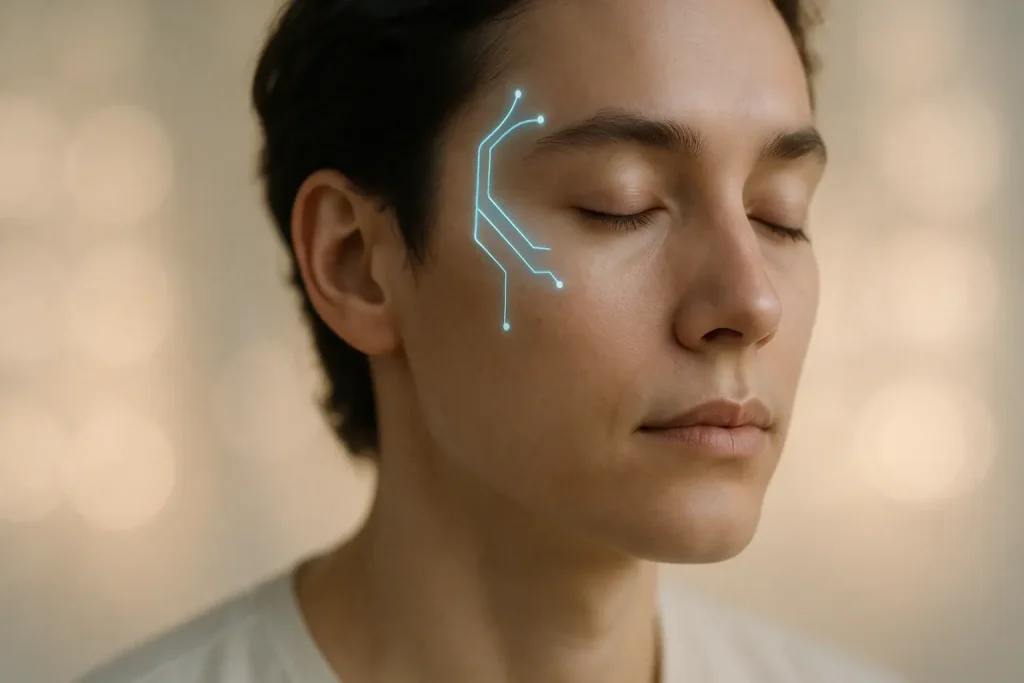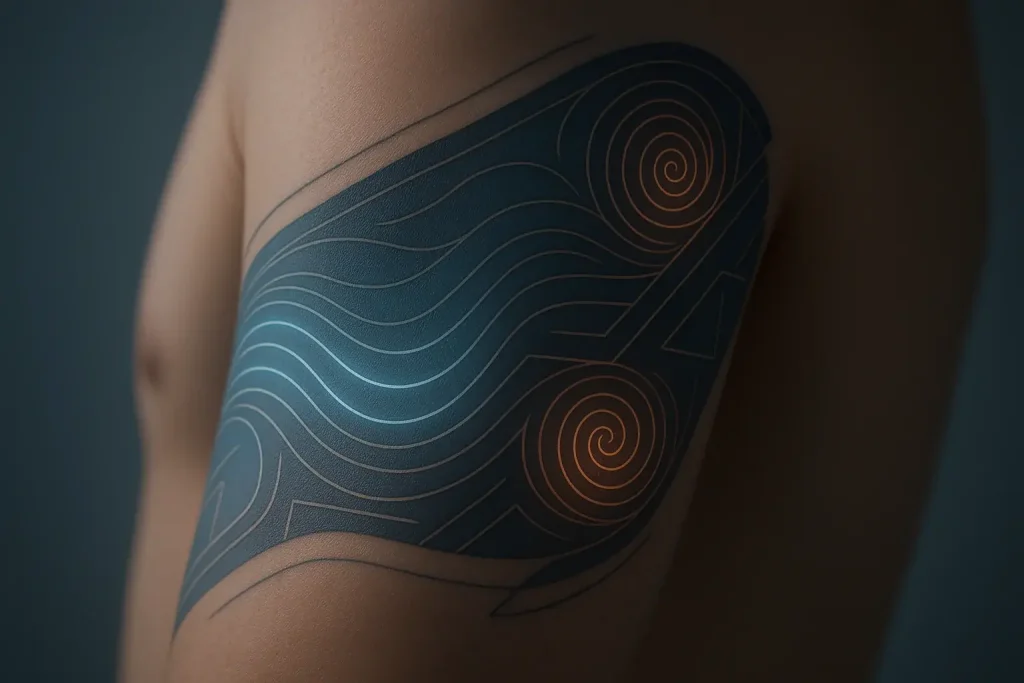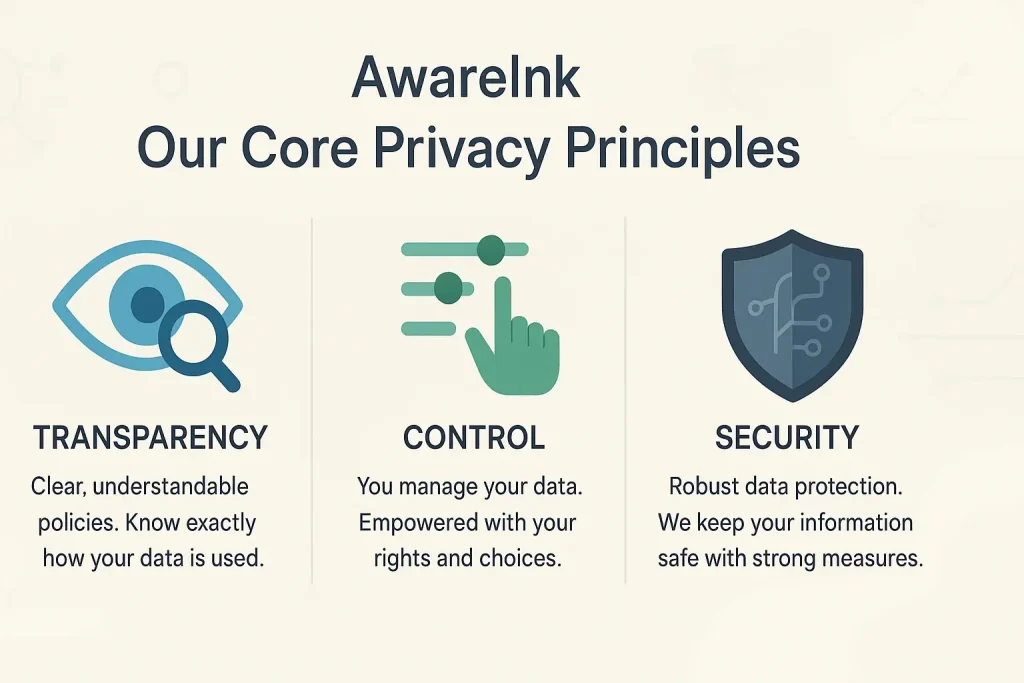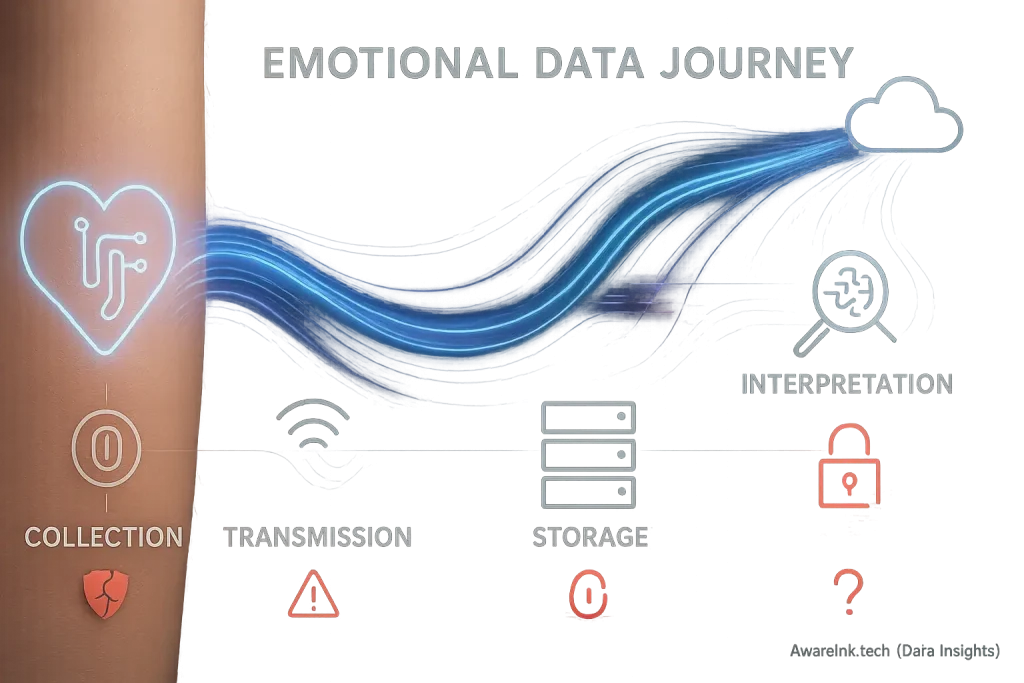The Truth About Mood Tattoo Accuracy: What the Data (and Users) Really Say
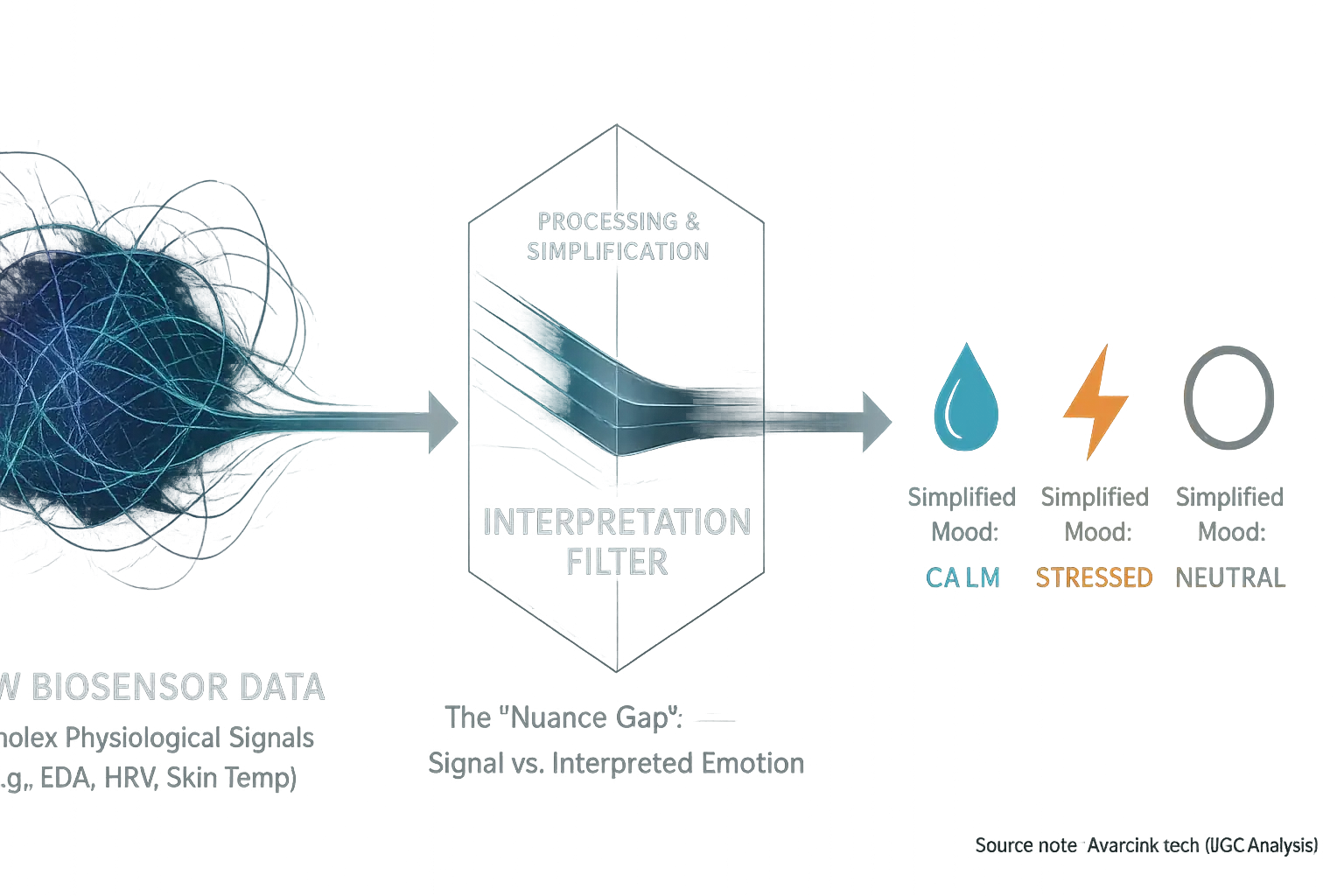
Can a tattoo truly read your mood? This question generates intense debate. Hype abounds. AwareInk.tech believes understanding smart tattoo accuracy is crucial. Misinformation breeds disappointment. Know the facts.
Our investigation probes smart tattoo accuracy claims. These devices track physiological signals. Biosensors collect data. They do not directly decipher complex emotional states. Real accuracy involves appreciating these physiological correlates and their nuanced link to your feelings. Many users discover their initial expectations require substantial adjustment.
Several factors influence a mood tattoo’s reported precision. Biosensor quality varies. Individual physiology impacts readings. Misinterpreting this raw physiological data is a common pitfall. The technology isn't fundamentally flawed. Users must learn its operational language and its definite limitations.
Are Your Mood Tattoo Expectations Realistic? Take Our Quick Quiz!
Test Your Mood Tattoo Accuracy Expectations!
Question 1: A mood tattoo can tell me exactly what emotion I'm feeling (e.g., 'sadness', 'joy').
Question 2: The data from my mood tattoo will always be perfectly consistent, regardless of what I'm doing.
Question 3: If my mood tattoo shows a 'stress' signal, it always means I'm feeling anxious.
Your Expectation Realism Score:
Our tool helps you see your mood tattoo expectations clearly. Misaligned hopes? They often lead to letdowns. Understanding current technology limitations empowers your journey. You are now better equipped for realistic outcomes.
Now, explore further. Uncover why these smart tattoo limitations exist. Learn practical ways AwareInk.tech suggests to interpret their signals. Ready to dive deeper into the science behind the signals?
Beyond the Hype: What Truly Influences Mood Tattoo Precision?

Mood tattoo accuracy is not simple. It resembles a complex weather forecast. Many elements shape the final reading. AwareInk.tech's research pinpoints key influence categories. These include your body's unique responses. The tattoo's own sensor capabilities matter greatly. Your surrounding environment also plays a large part.
Let's explore sensor data clarity. Biosensors face a "signal-to-noise ratio" challenge. The "signal" is your true emotional state. "Noise" includes many other bodily or external inputs. Cross-interference further complicates this picture. This means one bodily process can mimic another's signal. Imagine your tattoo flashing 'STRESSED'; you just climbed three flights of stairs, your heart pounding, and the tattoo might misinterpret exertion as anxiety. Many users report this confusion. What manufacturers rarely highlight is this common pitfall.
Your unique physiology impacts tattoo readings. No two bodies react identically. This underscores the need for personalized calibration. A tattoo needs to learn your specific baseline signals. What reads as 'calm' for you might differ for someone else. AwareInk's investigation into user feedback reveals a common theme. Many find initial device setup, or even ongoing personal 'training' of their tattoo, essential. This helps the device truly understand their individual emotional expressions.
External conditions also powerfully affect smart tattoo data. Think: temperature. Humidity. Even your clothing. These environmental variables can skew biosensor outputs. A hot day might elevate skin conductance. The tattoo could misread this as heightened stress. Our deep dive into user experiences shows these misinterpretations are frequent. Understanding these influences empowers smarter interpretation of your tattoo's messages.
Lost in Translation: The Risk of Misinterpreting Your Mood Tattoo Data
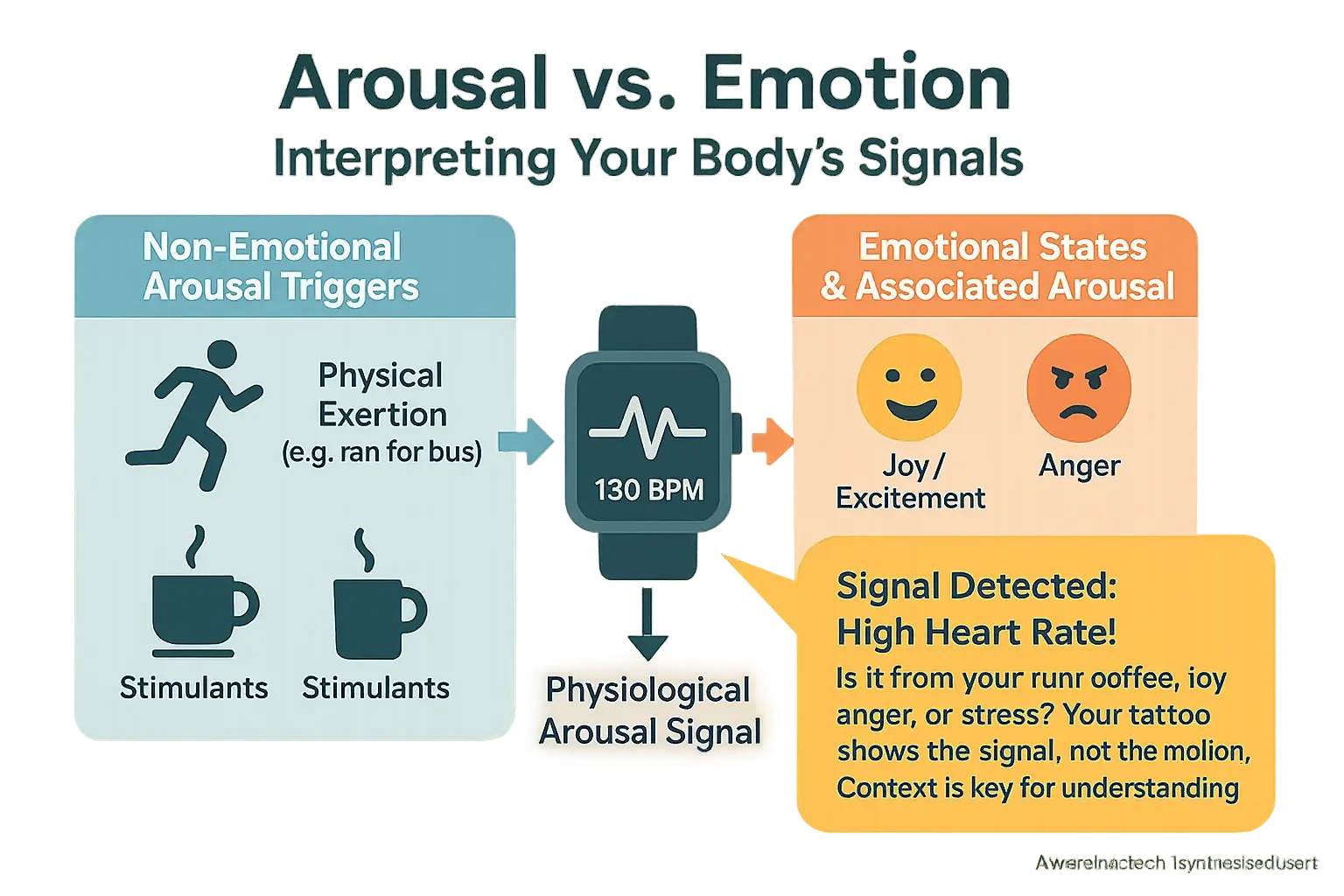
Your tattoo shows a signal. Not your definitive emotion. You are the expert on your feelings. Physiological arousal can mean many things. A fast heart rate might indicate excitement. It could also signal fear. Or perhaps you just ran for the bus. AwareInk.tech's analysis highlights this core point. Signals need context.
We understand the confusion. AwareInk.tech hears many stories from users. Users see a 'stress' signal. They later realize they were just excited. Or perhaps they had too much coffee. The tech does not know your specific situation. You do. Context is absolutely key for interpretation.
Over-reliance on technology presents a clear risk. Letting the tattoo define your feelings can diminish self-awareness. Your intuition might fade. This device is a tool for awareness. It is not a replacement for deep self-reflection. AwareInk.tech's insights suggest a better approach. Always ask: "What else could this signal mean now?" Consider all possibilities.
Mood tattoos offer a new lens. They help you observe yourself. The real power is not in the device 'reading' you. Instead, it starts a conversation. A conversation with your own body. It is not a final verdict on your emotional state. You hold the true understanding.
